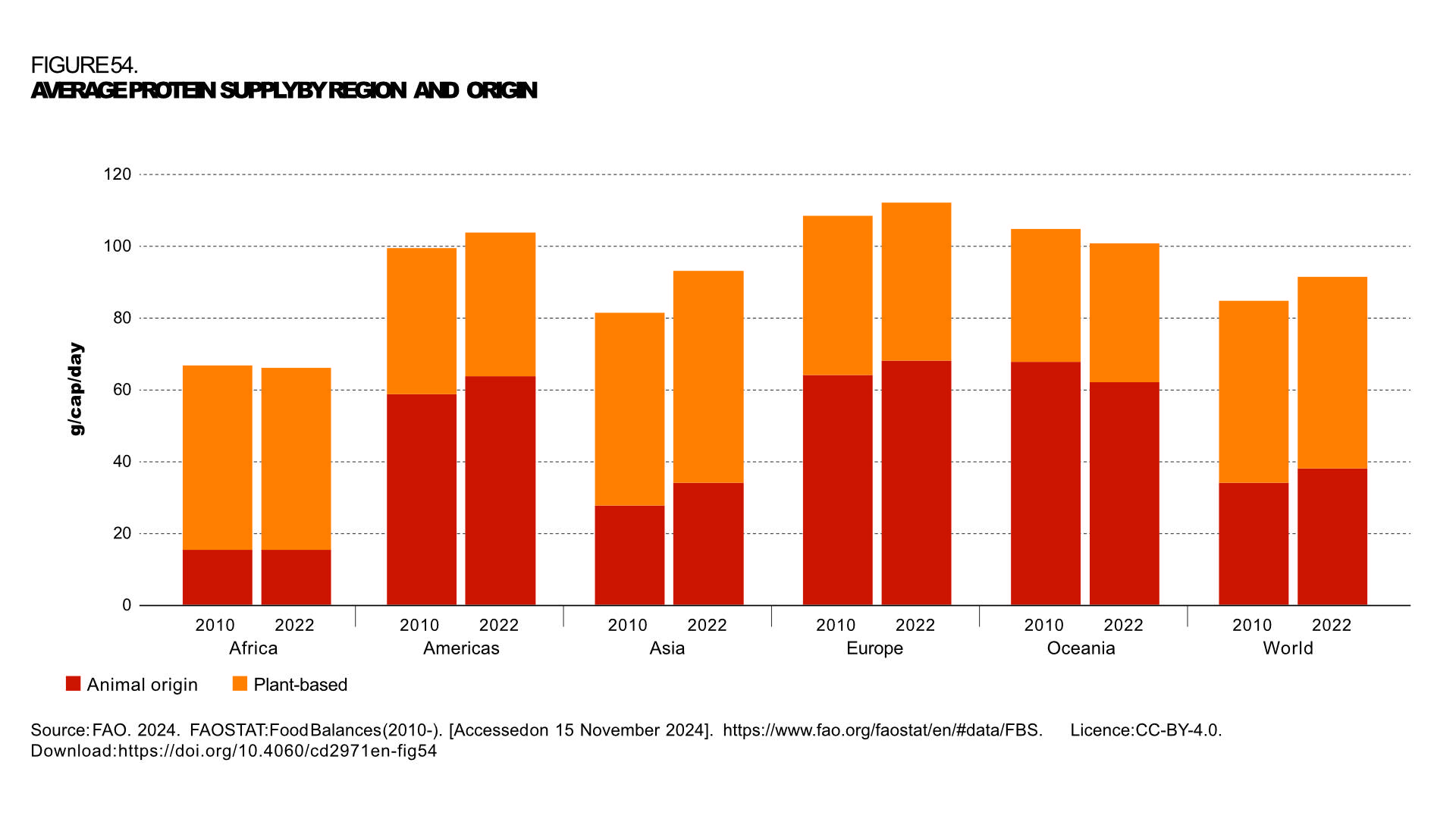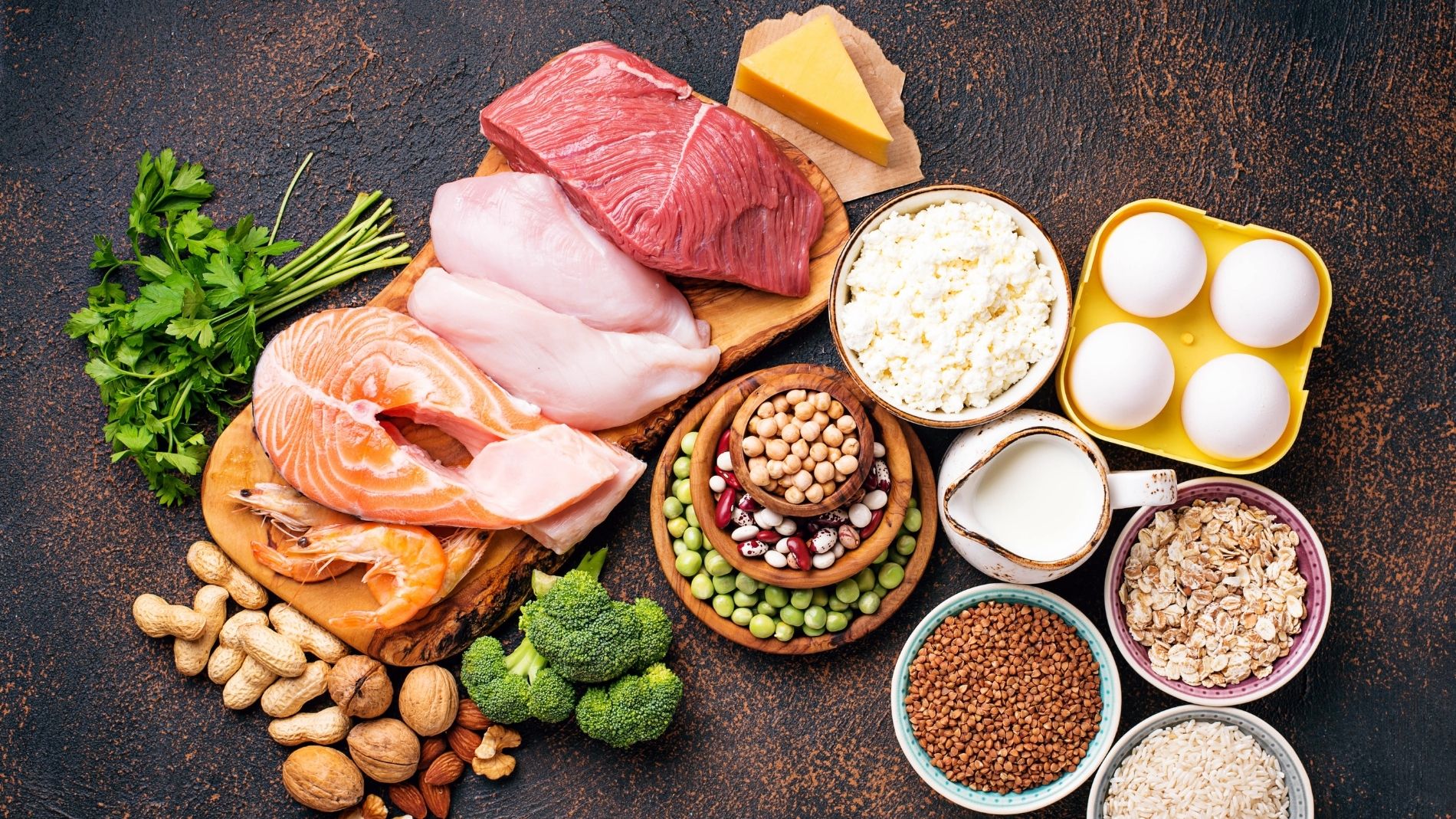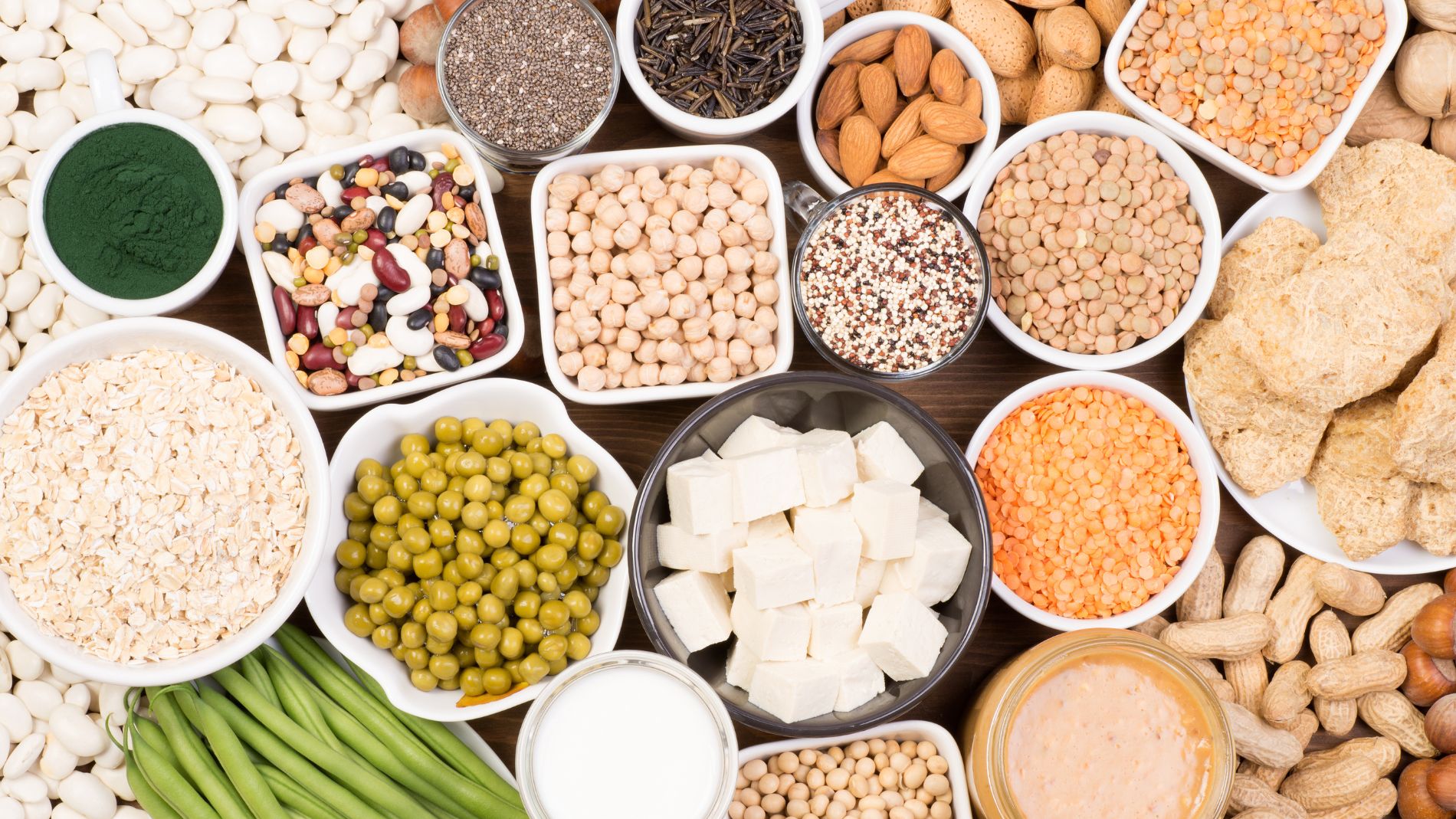The importance of proteins for humans and their development is undisputed. Over the course of time, the global protein supply has changed repeatedly. Industrial production has greatly increased the amount of available proteins, especially meat and milk, and thus facilitated access to protein-rich foods.
Whereas in earlier times the supply of proteins was heavily dependent on geographical, climatic or cultural circumstances, today all types of proteins are available worldwide.
In addition to proteins from animal meat and milk, there is a wide range of alternatives from plants, algae and fungi. Insect proteins and meat from laboratories (‘cultured meat’) will further expand the range. So-called “hybrid” products combine a mixture of plant-based ingredients, whereas “blended” products consist of a mixture of animal and plant-based ingredients.

Fig.: Average protein supply by region and protein type (animal or vegetable).
The increasing variety of proteins is giving consumers more and more freedom of choice. They can consciously choose the protein products that suit their nutritional needs and beliefs.
As the world's population continues to grow, the question arises as to how the increasing demand for protein can be met sustainably in times of climate change. Aspects such as environmental impact, water and land requirements in the production of proteins, but also food in general, are therefore becoming increasingly relevant.
Sources:
OECD/FAO (2024), OECD-FAO Agricultural Outlook 2024-2033, OECD Publishing, Paris/FAO, Rome;
FAO. 2024. Meat Market Review: Overview of global market developments in 2023. Rome.; FAO. 2024. World Food and Agriculture – Statistical Yearbook 2024. Rome.


